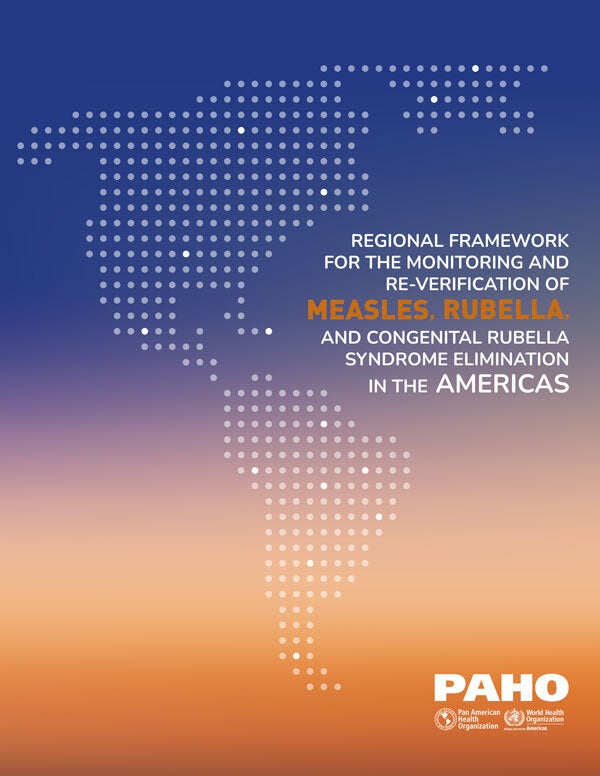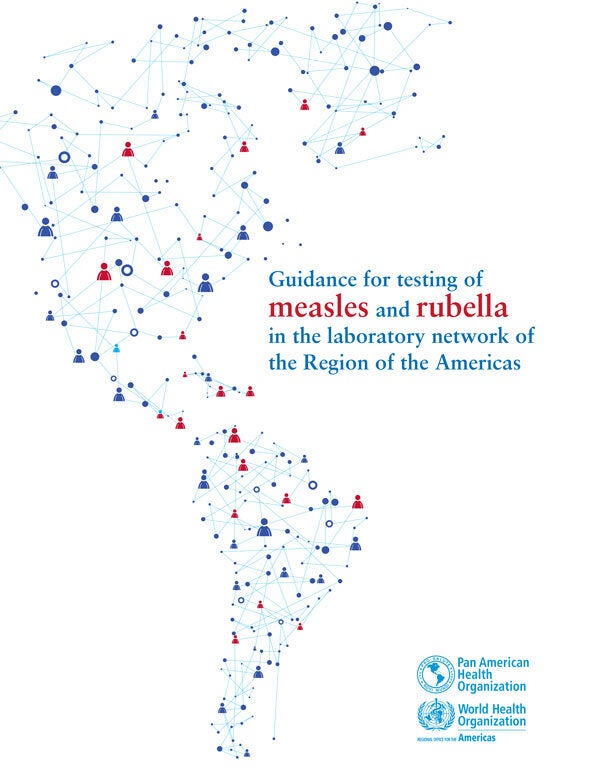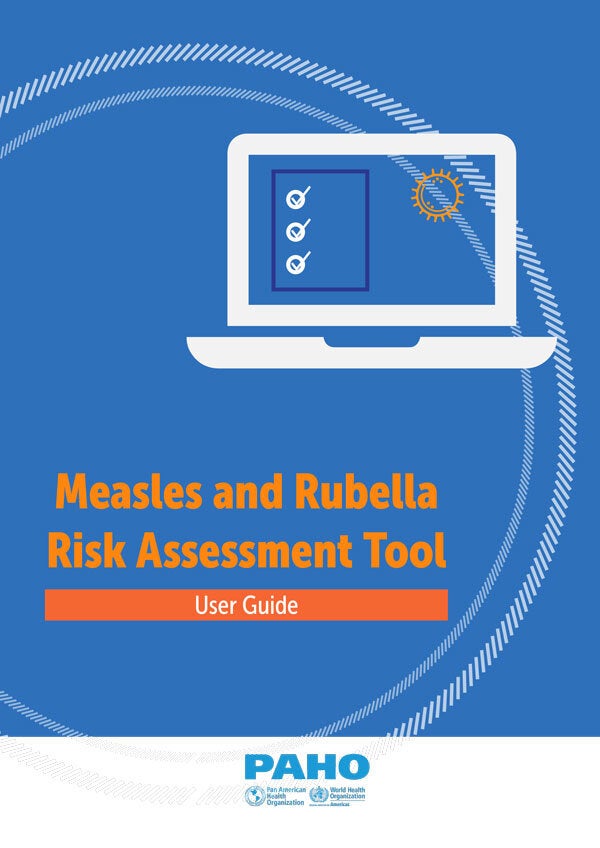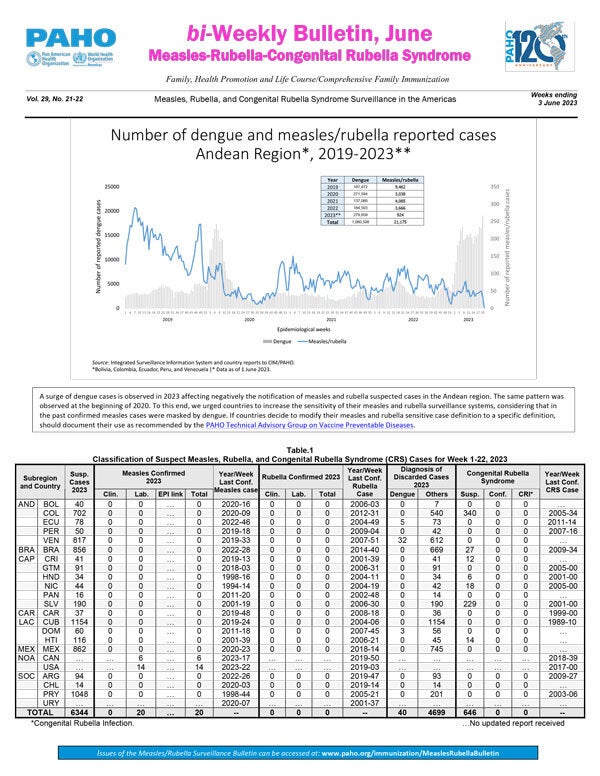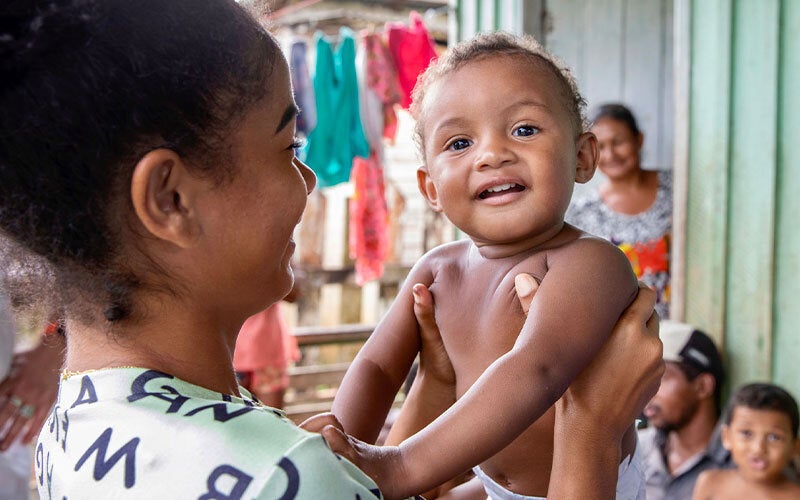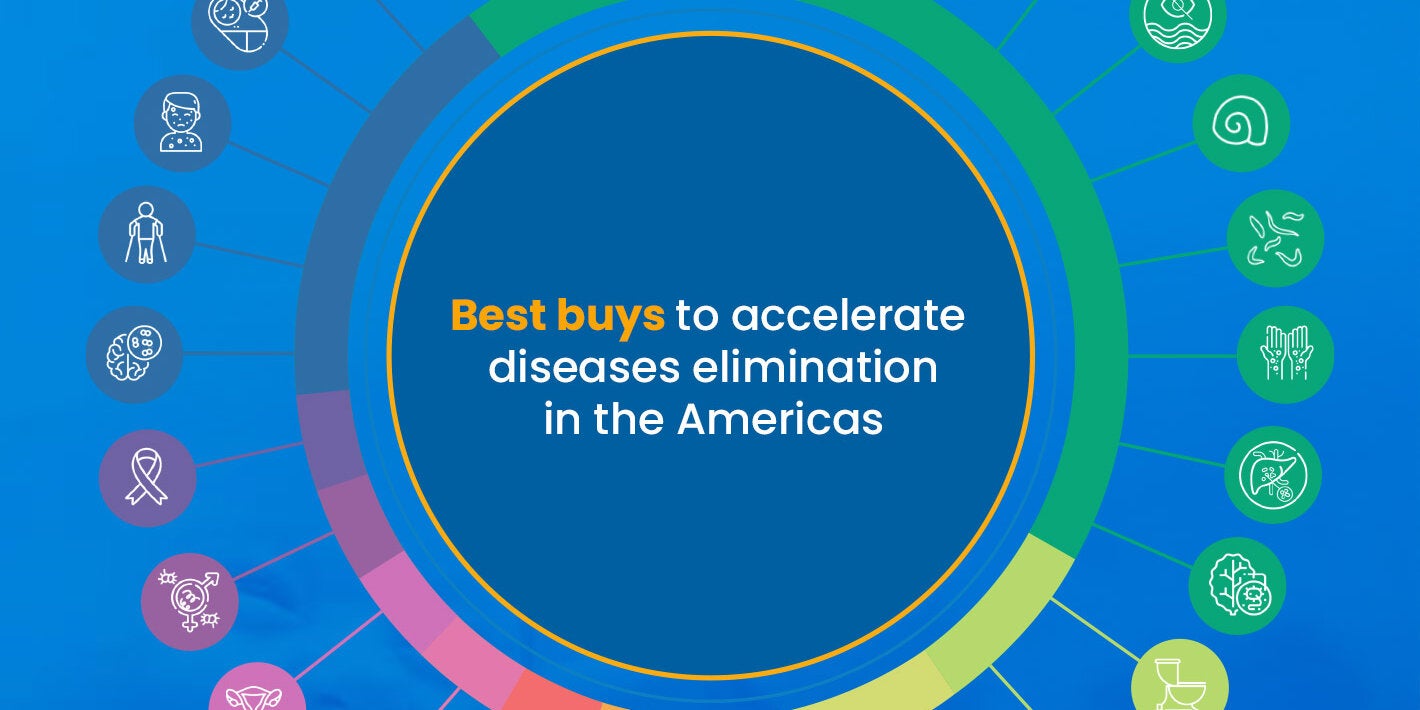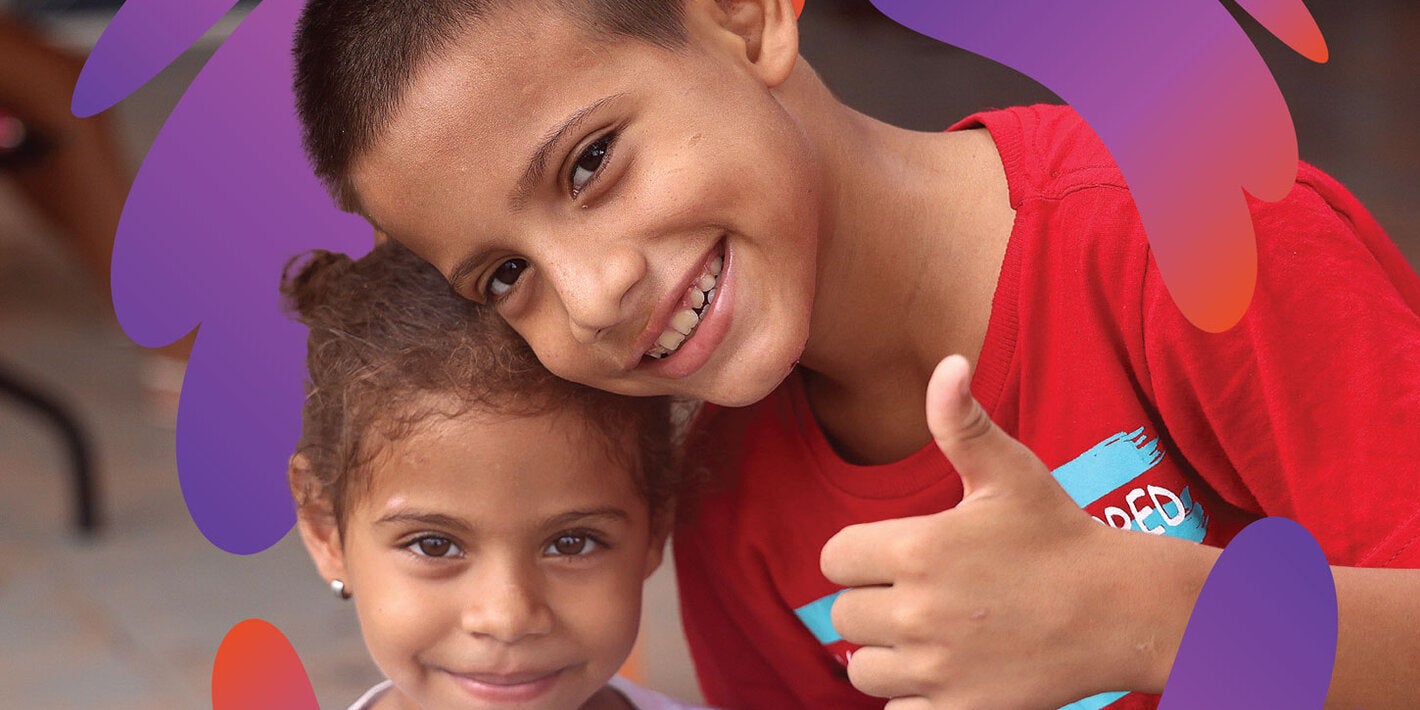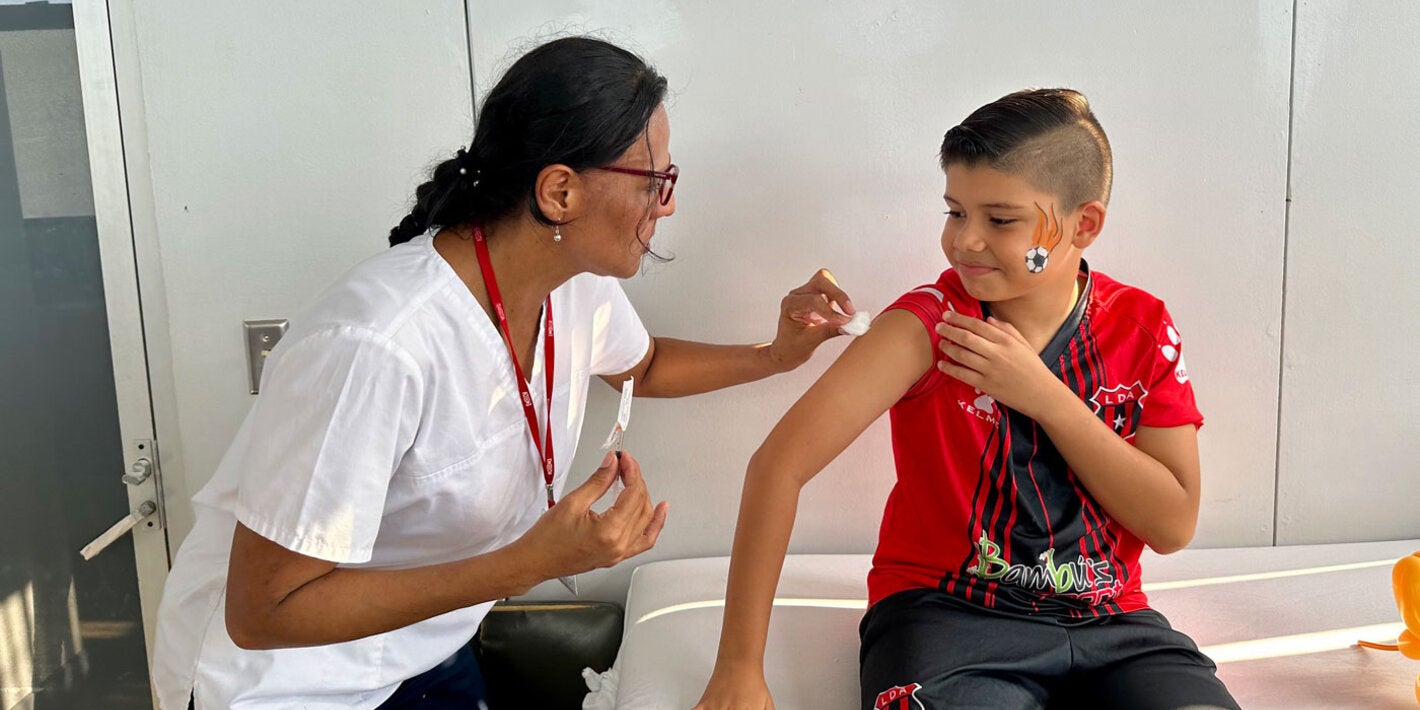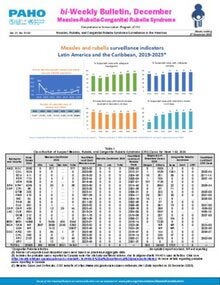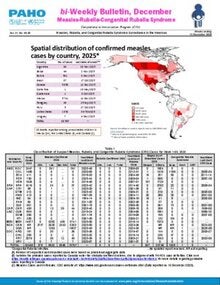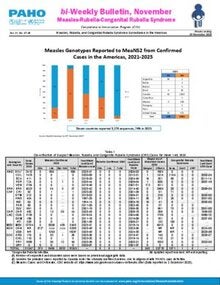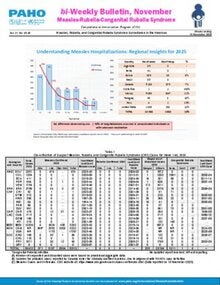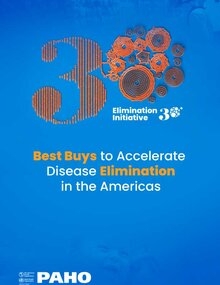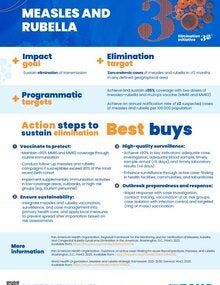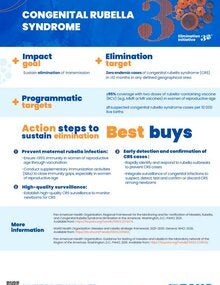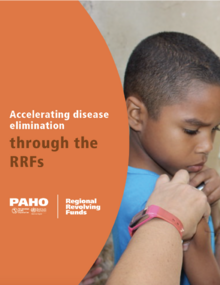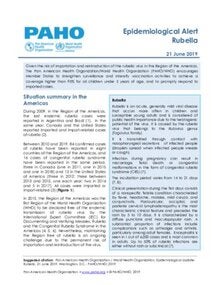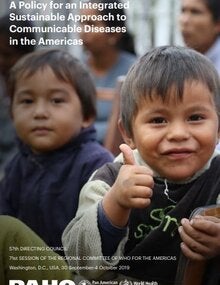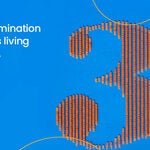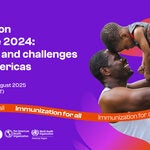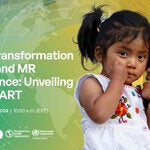Rubella is a contagious viral disease, which occurs most often in children. The virus is transmitted via the respiratory route, and symptoms usually appear 2-3 weeks after exposure. In children, the disease is usually mild, with low fever, nausea and a transient rash. Adults may develop arthritis and painful joints. Infection during early pregnancy may cause fetal death or congenital rubella syndrome (CRS), which is characterized by multiple defects, particularly to the brain, heart, eyes and ears. There is no specific treatment for rubella. The disease can be prevented by immunization.
- Rubella is a viral disease that generally causes mild infections in children and young adults, but if contracted early in pregnancy, it can cause miscarriage, still births, or CRS, which can result in visual and hearing impairment, heart defects, and other lifelong disabilities such as autism, diabetes and thyroid dysfunction.
- Rubella is transmitted by airborne droplets when infected people sneeze or cough.
- There is no specific treatment for rubella, but the disease is preventable by vaccination.
- Before wide-scale rubella vaccination, an estimated 16,000 to more than 20,000 children were born with CRS each year in Latin America and the Caribbean.
- Globally, an estimated 110,000 babies are born with CRS every year, mostly in South East Asia and Africa.
In April 2015, an international expert committee reviewed epidemiological evidence presented by member countries of the Pan American Health Organization/World Health Organization (PAHO/WHO) and determined that the region had eliminated endemic transmission of rubella and congenital rubella syndrome (CRS). Rubella and CRS are the third and fourth diseases to be eliminated from the Americas, following smallpox in 1971 and polio in 1994. In all four cases, the Americas region was the first in the world to achieve elimination.
- Member countries of the Pan American Health Organization/World Health Organization (PAHO/WHO) adopted the vaccine for measles, mumps and rubella (MMR) in increasing numbers between the 1980s and early 2000s.
- In 2003, the countries collectively set the goal of eliminating endemic transmission of rubella by 2010, through the implementation of PAHO-recommended surveillance and immunization strategies.
- From 1998 to 2008 an estimated 250 million adolescents and adults in 32 countries were vaccinated against rubella in mass vaccination campaigns. • The last cases of endemic rubella and CRS in the Americas were reported in 2009.
- A dose of MMR vaccine costs US$1.09.
- An analysis of the regional rubella elimination initiative estimated that some 112,500 CRS cases may have been prevented in Latin America and the Caribbean over 15 years, resulting in savings of US$3 billion.
- Rubella continues to circulate in other regions of the world, and countries in the Americas report sporadic imported cases.
- To maintain the elimination of rubella/CRS, PAHO/WHO and the International Expert Committee for Measles and Rubella Elimination recommend that all countries in the Americas strengthen surveillance and maintain high population immunity through vaccination.


